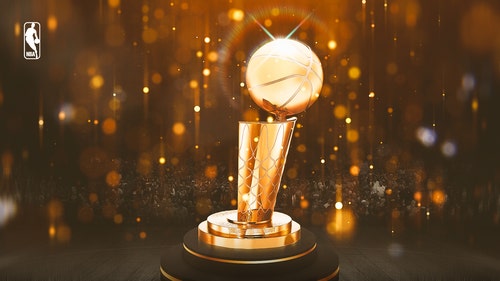
An appreciation of Moses Malone

Moses Malone, who died Sunday at 60, was 34 years old the last time he finished an NBA season with more offensive rebounds than anybody else. It's an age at which the typical career is either mid-fizzle or altogether extinguished. But Malone's career was far from typical.
There was a generation-long stretch when he was the sport's best at snatching missed shots off the rim — particularly his own. It was that vacuum-sucking skill above all others that made him a household name, winner of more MVP trophies (three) than Kobe Bryant and Shaquille O'Neal combined. (Only five players have more MVPs than Malone.) He was the world's most dominant force in 1983, the alpha dog on a legendary Philadelphia 76ers squad that helped Malone win his only championship. ("Fo, fo, fo.")
He was the first player to ever go straight out of high school in 1974, spurning hundreds of recruiters for a contract with the ABA's Utah Stars, but Malone's ensuing career overshadowed that fact, turning it more into a Jeopardy answer than something he should primarily be remembered for.
Possessions effectively ended when Malone touched the ball in the paint. He would either score immediately, shoot and miss a few times before finally putting it in, or get fouled.
For eight straight seasons (1979-1986) Malone finished either first or second in free-throw attempts. Eight. Straight. Seasons. From 1981-85 he averaged more rebounds than every other player in the league.
At 19, during his rookie season with the ABA's Utah Stars, Malone led the league in offensive rebound rate. When the playoffs rolled around, he shot 63.8 percent from the floor on a cool 22.7 points and 17.5 rebounds per game average.
In 1979, on the eve of Malone's 24th birthday, New Orleans Jazz seven-foot center Rich Kelley rightly described a force of a man who'd eventually become one of the 12 best players in basketball history:
"He has quickness, timing, all the things you would expect, but the main thing is his tenacity. Eighty percent of Malone's game is on the offensive board. It changes everything. You play the Rockets, it's something entirely different, because I'd say a third of their game is Moses on the offensive board, keeping the ball in play. And that's completely unique to any team ... What goes through your mind is that you have to box him out every damn time, every time the ball goes up. It just wears on you, mind and body. The other good centers learn to cruise for a quarter. They pick their spots. Not Moses. By the end of every game against him, you're whipped."
So why isn't Malone regularly included with the all-time greats, where he unquestionably belongs? Maybe it was his perfectly reasonable desire for privacy — a shyness that gave birth to the unfortunate "Mumbles Malone" nickname those he wouldn't or couldn't open up to decided to use.
Or maybe it was the monotonous playing style. He lacked a signature move or iconic on-court moment but still toyed with giants, tapping missed shots into the basket so often it looked like he was playing a different sport than everybody else. It wasn't aesthetically beautiful to watch, but neither is a tornado.
Remove the first two years of his pro career (his time in the ABA) and Malone still finished with more points than Oscar Robertson, Hakeem Olajuwon and Tim Duncan. He grabbed over 1,100 more offensive rebounds than Robert Parish, who's second on the all-time leaderboard. Include his ABA days and the only two players who accumulated more total boards than Malone were Bill Russell and Wilt Chamberlain.
That's what legends are made of, and his sovereignty over the paint was all the articulating Malone had to do.



